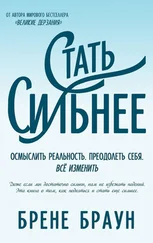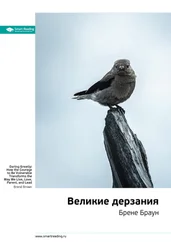Incognito : Eagleman, D. (2011 ). Incognito: The secret lives of the brain. New York: Pantheon.
Research from the Stone Center at Wellesley: Hartling, L., Rosen, W., Walker, M., and Jordan, J. (2000). Shame and humiliation: From isolation to relational transformation ( Work in Progress No. 88 ). Wellesley, MA: The Stone Center, Wellesley College.
James Pennebaker’s work:
Pennebaker, J. W. (2004). Writing to heal: A guided journal for recovering from trauma and emotional upheaval. Oakland: New Harbinger Publications.
Pennebaker, J. W. (2010). Expressive writing in a clinical setting. The Independent Practitioner, 30: 23–25.
Petrie, K. J., Booth, R. J., and Pennebaker, J. W. (1998). The immunological effects of thought suppression. Journal of Personality and Social Psychology, 75: 1264–1272.
Pennebaker, J. W., Kiecolt-Glaser, J., and Glaser, R. (1988). Disclosure of traumas and immune function: Health implications for psychotherapy. Journal of Consulting and Clinical Psychology, 56: 239–245.
Richards, J. M., Beal, W. E., Seagal, J., and Pennebaker, J. W. (2000). The effects of disclosure of traumatic events on illness behavior among psychiatric prison inmates. Journal of Abnormal Psychology, 109: 156–160.
Pennebaker, J. W. (2004). Writing to heal : A guided journal for recovering from trauma and emotional upheaval. Oakland: New Harbinger Publications.
Marilyn Frye describes a double bind: Frye, M. (2001). Oppression. In M. Anderson and P. Collins (Eds.), Race, class and gender: An anthology. New York: Wadsworth.
In a US study on conformity to feminine norms: Mahalik, J. R., Morray, E., Coonerty-Femiano, A., Ludlow, L. H., Slattery, S. M., and Smiler, A. (2005). Development of the conformity to feminine norms inventory. Sex Roles, 52: 317–335.
What’s ironic (or perhaps natural) is that research tells us that we judge people: Shrauger, S., and Patterson, M. (1974). Self-evaluation and the selection of dimensions for evaluating others. Journal of Personality, 42, 569–585.
I wrote an op-ed on bullying: Brown, B. (September 30, 2002). Reality TV bites: Bracing for a new season of bullies [op-ed]. Houston Chronicle, p. 23A.
Well, when looking at the attributes associated with masculinity in the US: Mahalik, J. R., Locke, B., Ludlow, L., Diemer, M., Scott, R. P. J., Gottfried, M., and Freitas, G. (2003). Development of the Conformity to Masculine Norms Inventory. Psychology of Men and Masculinity, 4: 3–25.
Brown, C. B. (2002). Acompañar: A grounded theory of developing, maintaining and assessing relevance in professional helping. Dissertation Abstracts International, 63 (02). (UMI No. 3041999).
Brown, B. (2010). The gifts of imperfection: Letting go of who we think we should be and embracing who we are. Center City, MN: Hazelden.
Brown, B. (2010). Shame resilience theory. In S. P. Robbins, P. Chatterjee, and E. R. Canda (Eds.), Contemporary human behavior theory: A critical perspective for social work, rev. ed. Boston: Allyn and Bacon.
The Velveteen Rabbit : Williams, Margery (1922). The velveteen rabbit. New York: Doubleday.
CHAPTER 4
THE VULNERABILITY ARMORY
Dr. Kristen Neff:
Neff, K. (2011). Self-compassion: Stop beating yourself up and leave insecurity behind. New York: William Morrow.
Neff, K. (2003). Self-compassion: An alternative conceptualization of a healthy attitude toward oneself. Self and Identity, 2: 85–101.
Neff, K. (2003). The development and validation of a scale to measure self-compassion, Self and Identity, 2: 223–50.
Gretchen Rubin: http://www.gretchenrubin.com/
Rubin, G. (2012). Happier at home: Kiss more, jump more, abandon a project, read Samuel Johnson, and my other experiments in the practice of everyday life. New York: Crown Archetype.
Rubin, G. (2009). The happiness project: Or, why I spent a year trying to sing in the morning, clean my closets, fight right, read Aristotle, and generally have more fun. New York: Harper.
Andrea Scher: http://www.superherojournal.com/ and http://www.superherophoto.com/
Nicholas Wilton: http://nicholaswiltonpaintings.com/ and http://www.artplaneworkshop.com/
Leonard Cohen: “Anthem,” The Future, 1992, Columbia Records.
The Centers for Disease Control:
Morbidity and Mortality Weekly Report (MMWR), November 2011: Vital Signs: Overdoses of Prescription Opioid Pain Relievers–United States, 1999–2008.
Even more alarming: Stutman, Robert. 2011 lecture at The UP Experience. This video can be viewed here: http://www.thestutmangroup.com/media.html#video
Jean Baker Miller and Irene Stiver: Miller, J. B., and Stiver, I. P. (1997). The healing connection: How women form relationships in both therapy and in life. Boston: Beacon Press.
In Sir Ken Robinson’s wonderful 2010 TED talk: http://www.ted.com/talks/lang/en/sir_ken_robinson_bring_on_the_revolution.html
Jennifer Louden: http://jenniferlouden.com/
Louden, J. (2007). The life organizer: A woman’s guide to a mindful year. Novato, CA: New World Library.
The Houston Chronicle : Brown, B. (July 25, 2009). Time to get off the phone [op-ed]. Houston Chronicle , p. B7.
My dissertation: Brown, C. B. (2002). Acompañar: A grounded theory of developing, maintaining and assessing relevance in professional helping. Dissertation Abstracts International, 63(02). (UMI No. 3041999).
The statistics on post-traumatic-stress-related:
Parrish, K. (2011), Battaglia calls reducing suicides a top priority. American Forces Press Service. US Department of Defense. Harrell, M., and Berglass, N. (2011). Losing the battle: The challenge of military suicide. Center for New American Security Policy Brief.
Craig Bryan, a University of Texas psychologist: Thompson, M. (April 13, 2010). Is the army losing its war on suicide? Time magazine.
The American Bar Association: Weiss, D. C. (2009). Perfectionism, “psychic battering” among reasons for lawyer depression. American Bar Association Journal.
Team Red, White and Blue: http://www.teamrwb.org/
The In-Laws : The In-Laws (1979). Warner Bros. Pictures.
Almost Famous : Almost Famous (2000). DreamWorks Studios.
Scott Stratten: http://www.unmarketing.com/
Stratten, S. (2010). Unmarketing: Stop marketing. Start engaging. Hoboken: Wiley.
CHAPTER 5
MIND THE GAP: CULTIVATING CHANGE AND CLOSING THE DISENGAGEMENT DIVIDE
Terrence Deal and Allan Kennedy: Deal, T. and Kennedy, A. (2000). Corporate cultures. The rites and rituals of corporate life. New York: Perseus.
CHAPTER 6
DISRUPTIVE ENGAGEMENT: DARING TO REHUMANIZE EDUCATION AND WORK
Sir Ken Robinson speaks: Robinson, K. (2011). Second Edition. Out of our minds: Learning to be creative. Bloomington, MN: Capstone Publishing.
The Workplace Bullying Institute: http://www.workplacebullying.org/wbiresearch/2010-wbi-national-survey/
… bullied at work: Deschenaux, J. (2007). Experts: Anti-bullying policies increase productivity. Retrieved from http://www.shrm.org/LegalIssues/EmploymentLaw
Bill Gates wrote this in a New York Times op-ed: Gates, B. (February 22, 2012). Shame is not the solution [op-ed]. The New York Times.
Shame researchers June Tangney and Ronda Dearing explain: Tangney, J. P., and Dearing, R. (2002). Shame and guilt. New York: Guilford.
Writers like bell hooks and Paulo Freire:
Freire, P. (1970). Pedagogy of the oppressed. New York: Continuum.
Читать дальше






![Брене Браун - Вопреки. Как оставаться собой, когда всё против тебя [litres]](/books/436389/brene-braun-vopreki-kak-ostavatsya-soboj-kogda-v-thumb.webp)





